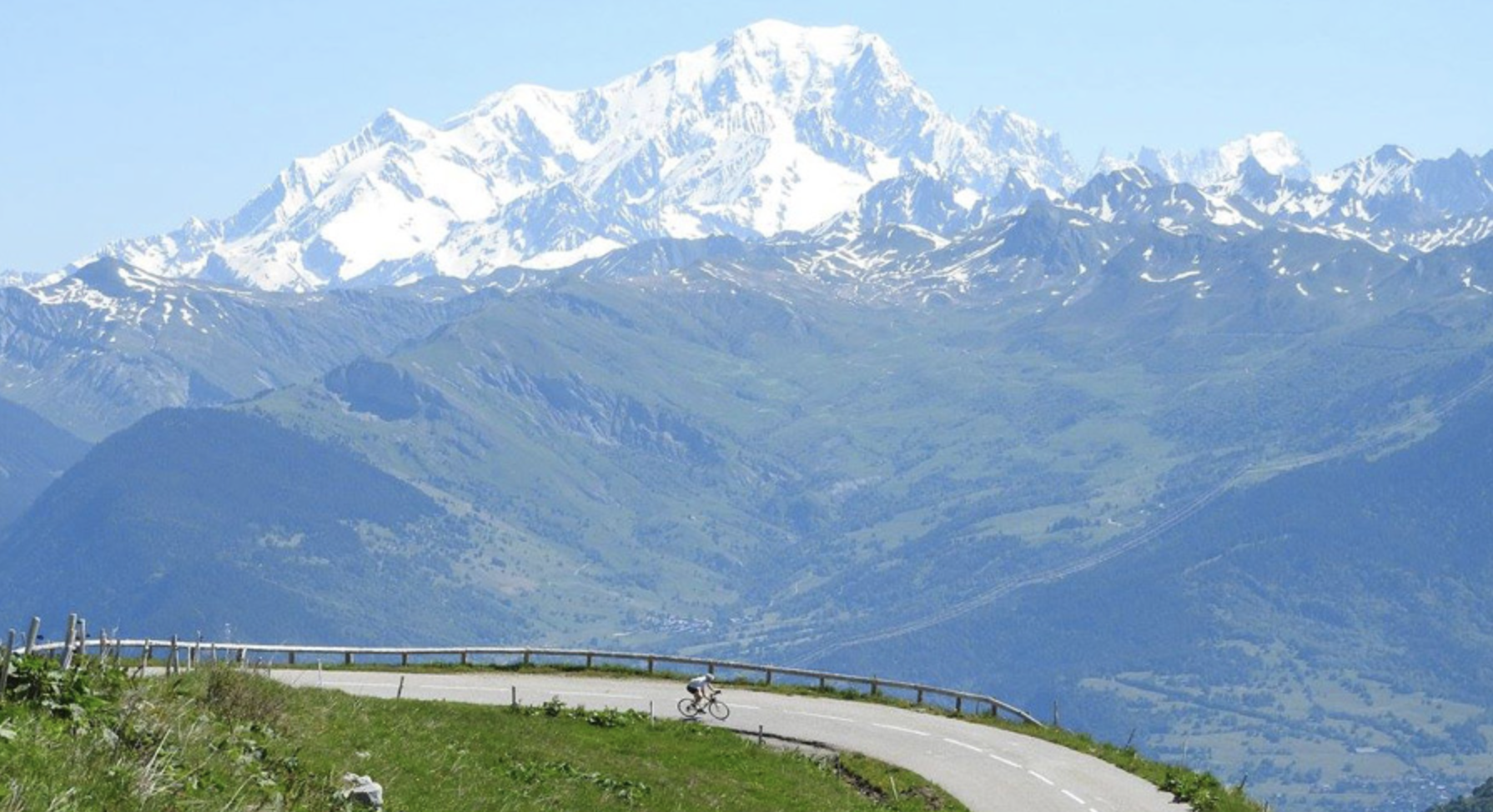
Climbing is a critical part of your cycling arsenal and you overall development as a two-wheeled athlete. It’s not just about adventure; if you want to be strong and competitive, you need to ride outside and find hills. Riding hills can make you a better, stronger, and faster cyclist.
So when people think about riding hills, most of us are struck with fear right in the heart. “Oh my god, hills, I hate them!”
No one is immune. There was a period of time in my cycling career where, after a tough race, I literally would go around hills. I added extra miles just to avoid the hills that I would discover on my route. Why? Because I had been beaten down by a bad hill experience.
It wasn’t until I learned to embrace the hills that I started to become better as a cyclist. Here are five reasons why you need to head to those hills and start getting stronger.
The First Reason is Cadence.
So climbing the hills actually really forces you to become one with your cadence for a variety of reasons.
First and foremost, we have to start using all the gears on our bike. Most cyclists only really use one or two gears. The rest of the cogs in their rear cassette are super shiny. Or maybe the trainer is the default setting and the full range of the cassette isn’t needed. A consequence of this scenario is our rider is not using the full range of their body’s strength.
Riding at different cadences, whether it’s in the small ring or the big ring, forces you to recruit different muscles. It also changes the way that you think about powering your bike.
You can change the level of torque that we’re putting into the pedals: the higher the cadence, the lower the torque, the lower power per rpm.
And so as you start climbing hills, sustained climbs, you have to get into a rhythm with your cadence. Climbing hills forces you to do that. It feels uncomfortable at first because it’s just not something that you normally do. The sooner you get better at handling different cadences and managing your choice of cadence (knowing which type of gear you want for this particular section of the hill), the better you’re going to ride.
You are going to stop losing those precious seconds from shifting errors. As a climber, you must retain that precious momentum, otherwise you will really slow you down between gear changes or transitions of the terrain.
The Second Reason: Your Position
So when you’re climbing the bike and you are going up either a steep or a sustained climb. Typically athletes will shift to the back of their saddle. Their hands will go on top of the bars — on the hoods — not down in the drops.
You should sit tall and focus on getting air in through your diaphragm. And in that position of being pushed back, we also get to change how we torque on the pedal. Sometimes being able to push a little more forward and down (rather than just down) can be a helpful change.
Additionally, you focus on pulling up on the pedals as well as pushing down. This will help you master the art of turning better circles at lower RPMs. This can become a comfortable space, and climbing hills will help you improve this skill.
Adapting your position to the terrain helps you to stay comfortable. It also enables you to continue to apply pressure to those pedals. So getting comfortable in that climbing position will actually make your stronger cyclist. It gives you a new position that you can take on when you’re on the flats or another terrain.
The Third Reason: Relaxation Under Stress
When you’re grinding up a hill there comes a time when you are out of gears, you’re clicking, and it’s not going. It’s like not happening.
The answer is clear: you are going to have to work.
This is when cyclists get tense. For example the hands really start to grip the bars. You can see it up on the shoulders which are super high. They’re using every fiber of their muscle to help their quads and their glutes push that bike. This doesnt’ help your legs, and actually is the source of a lot of wasted energy.
Take a look at professional cyclists. They make climbing and suffering look easy. This is because their body is relaxed. In a way, this relaxation lets them do even more work.
You need to find a space inside the “work” of climbing that is still relaxed for you. This way, when you feel that tension and the pull of gravity on you can still find places to relax.
Which part can you relax? Can you drop those shoulders? Can you change your breathing? Can you stretch out your back a little bit? Can we shift in the saddle? How are you going to find space inside that strength to be comfortable?
We’re transitioning from that flat, I’m going fast, I’m getting this big return on my work mode…over to this climbing section where the capacity for returns has shrunk dramatically. It’s almost a claustrophobic feeling. Finding a way to get comfortable inside this tighter space is really important.
It’s an important part of your cycling progression to become better at handling extreme amounts of stress and other places when you’ll ride, which are like sprint finishes or other climbs or places during the bike ride where excessive power is actually to your advantage.
Learning how to climb in that situation is an opportunity to do that a little bit in slow motion. So you get better at recognizing the the enemy that is pain, and you can wrestle with it a bit and come to terms with it right on your own, which I think is really important.
The Fourth Reason: Developing a Standing Rhythm
One of my biggest pet peeves is riding with triathletes (yes, I am one!) who decides to stand up. Because the minute they stand up, their bike comes backwards right into your front wheel, unless you’re super careful. And that’s because triathletes don’t have a good sense of what it means to keep tension on the pedals.
Even when they’re transitioning from seating to standing as a result, that bike starts to jerk back. And you can tell the difference between someone who can climb smoothly or someone who’s climbing quickly. And someone who’s climbing with rhythm, right? If you think about it from the dance floor, you know what rhythm is on the dance floor, calming your bike is also very similar.
If you’ve watched some of those pro cyclists ride, men and women are like, and when they climb that bike is just rocking underneath them and they’re just moving up that hill, it’s one fluid motion, and they’re going versus what I believe most of us look like. We’re just grabbing those bars as tight as you can.
And just jerking from side to side. And just praying that every ounce of energy we have is going into the pedal into the drive chain, into the wheels, into the road and getting us over the top of this really grueling hill. So climbing actually forces you to develop a rhythm outside of the saddle, which I think is really important.
We all have a cadence that we’re familiar with when sitting. But are you familiar with your standing cadence and know how that can become an asset for you? Just even down the road, again, launching into a sprint, picking up some momentum over the top of a hill, or just giving your back a break for a little bit and standing for 10, 20 minutes, the more comfortable you get a standing, the better off you can be.
Power-User Tip: When standing, you want to get your shoulders over the tops of the handlebars bars. If you’re standing, you should be able to look straight down on top of your hands. You can do a lot of work there with the core muscles that are going to fatigue super early. Stand tall on that bike and develop a new standing for them.
The Fifth Reason: Descending
One of the reasons that people don’t like to climb is because they have to go down the other side. Becoming comfortable with descending, especially if you’re a fortunate enough to be in a group ride, is a super power user skill. If you can handle your bike going fast on a descent, then you can handle your bike on the flats at half the speed.
Descending and bike handling are critical skills whether you ride off-road, road racing, or just riding for fun. Even triathletes can benefit from better bike handling skills. Descending is a great place to learn because we don’t have to worry about braking or shifting.
Descending is all about weight, distribution management, picking your line, things that we need to be doing when we’re on the flats, when we’re transitioning from a slight downhill to a flat or from a flat to a slight uphill picking our line, how do we want to handle it?
For most people learning how to descend downhill starts by riding downhill with someone else, following their line, and learning their body language.
So definitely pick someone who you think is a good descender or ask around and find someone who isn’t. Do your best to stick safely behind them at a safe distance. You can manage it and pick up some new descending skills.
Moving Forward
So when you’re thinking about your training and you hesitate at a hill, don’t turn around. Go straight up that hill.
You’re going to do what your can with the gears on your bike. You’re going to work on your cadence. You’re going to work on your positioning. You’re going to find comfort inside the stress.
Find that rhythm that works for you on the hill. And then finally enjoy the reward of the descent. Focus on those bike handling skills. Catch your breath as you zip up that jersey again. It’s time to get back to work and be ready for that next hill. Ride on!

Leave a Reply